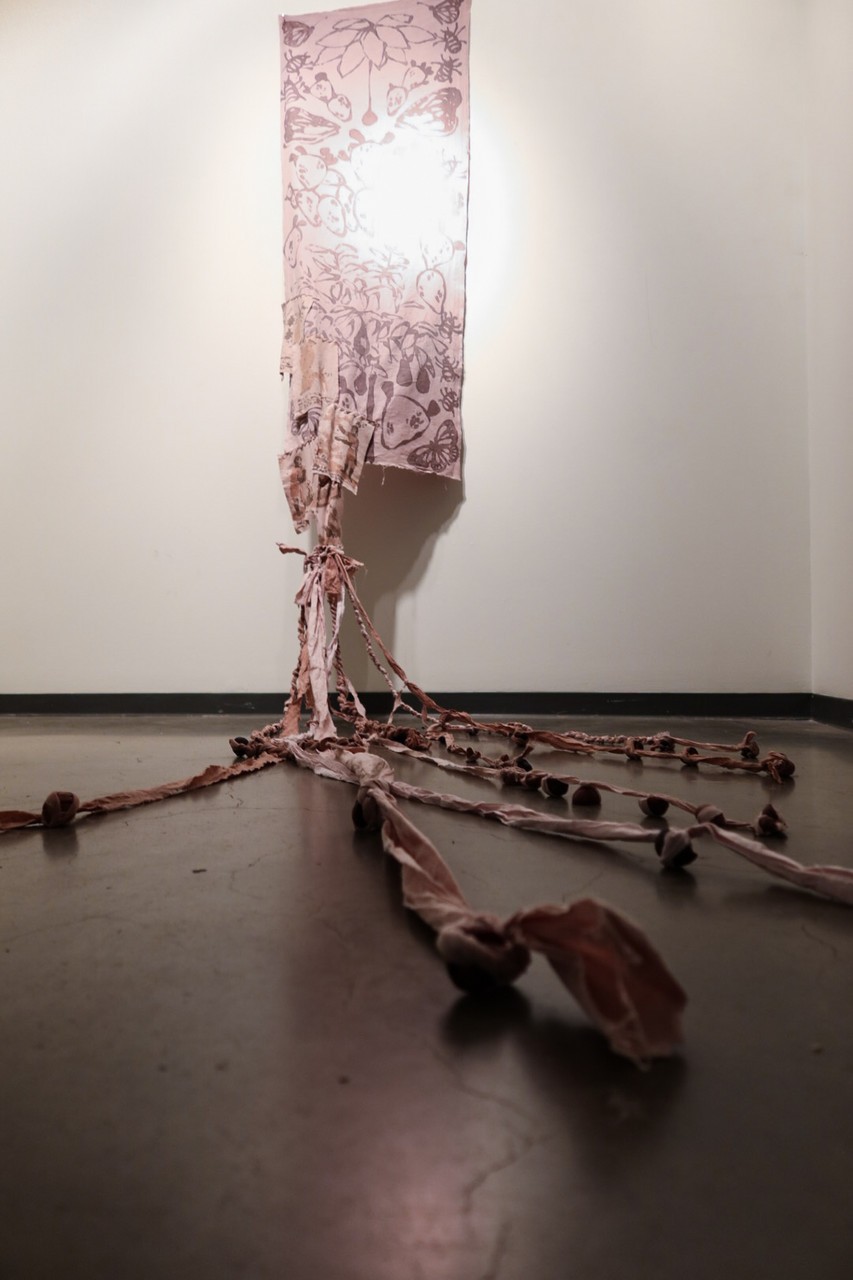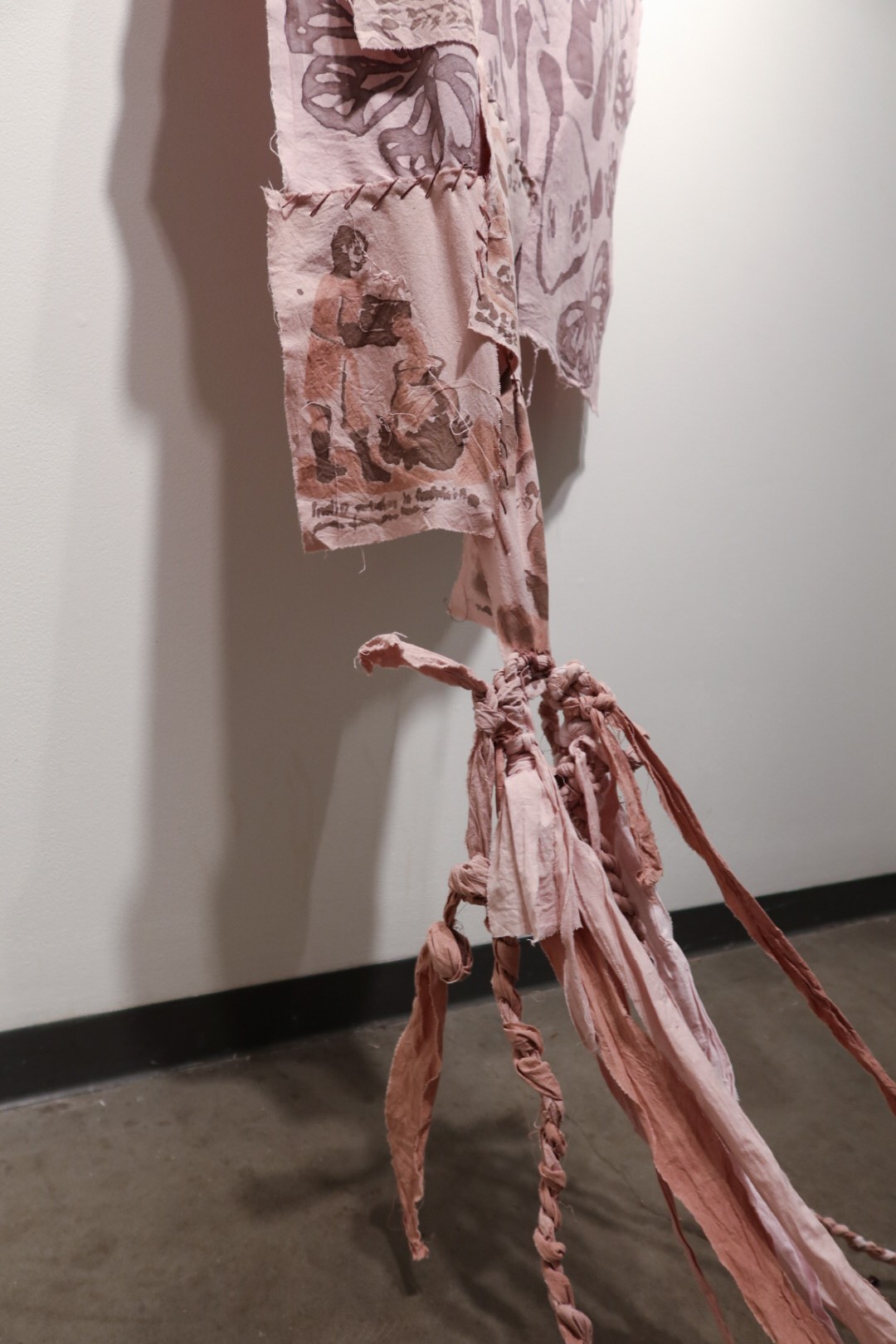Isabela Markus Nafarrate
cochinilla/aguacate
2023
 Cotton, cochineal and avocado dye, avocado pits, 2’1” x 7’6” x 5'
Cotton, cochineal and avocado dye, avocado pits, 2’1” x 7’6” x 5'
Artist statement
Globalization has allowed people to emigrate far from their country of origin. It now also allows them to keep the same diet they had back home. But what are the implications of having access to produce grown thousands of kilometres away? What has to happen so it is possible to sit and enjoy a delicious and authentic Mexican meal in Canada? In this piece, cotton dyed with cochineal and avocados contains a glimpse of Mesoamerica’s magnificent natural tapestry. It is covered and weighed down by 18th-century illustrations of the process of making cochineal dye. Originally drawn by a Spanish explorer, this catalogue of Mexico’s resources documents colonial extractivism. At different points in history, the bright colours of cochineal dye and the delicious flavour of avocados have captivated the West. Today, the incredibly high demand and high-profit margins of the “green gold” have attracted the interest of crime cartels. They have infiltrated the avocado business, increasing violence in Michoacán. The split and drained avocado pits are not the only victims of the feverish extraction; they join the forests in Michoacan, the Monarch butterflies that are losing their habitat, exploited workers, and the people killed or displaced by gang violence.

Artist’s biography
Isabela Markus Nafarrate’s work explores areas of contrast between the organic and the artificial, permanence and ephemerality, innocence and maturity. She creates a space where ancient myths and pop culture; glitter and rusted nails; mountains and single-use plastics, both clash and melt into each other. Oil paint and textiles lay the foundation for a practice that embraces materiality, whether it is through the intentional and laborious natural dyeing process or the incorporation of knick-knacks such as seeds, broken glass, rhinestones, toys, avocado pits, and lace. The Montréal-based artist’s practice combines research, reflection, and play, often questioning our relationship with nature and objects. Her childhood in Mexico and experience as an immigrant in Canada continue to inform her perspective and infiltrate her visual language.


